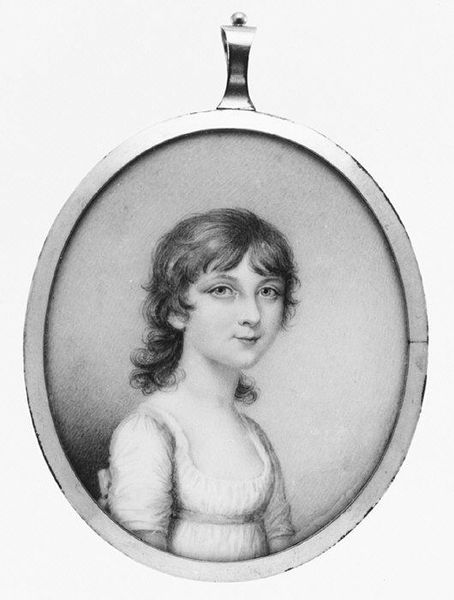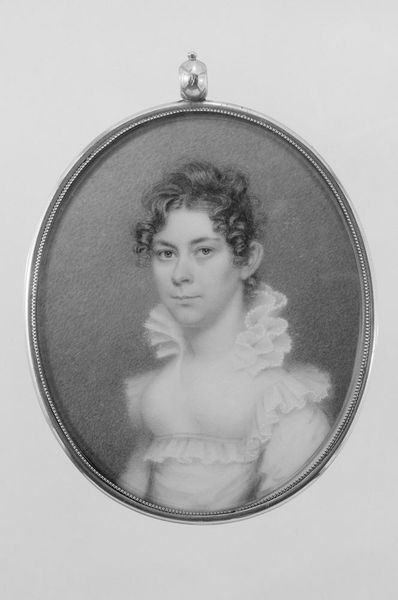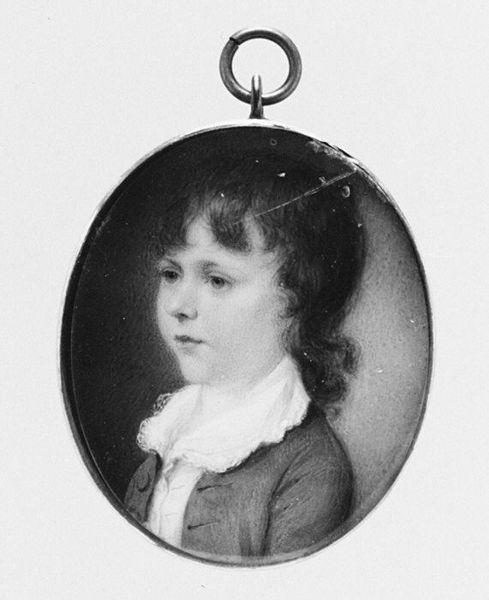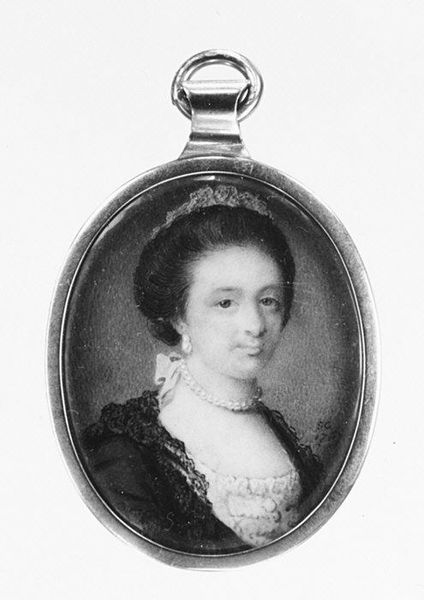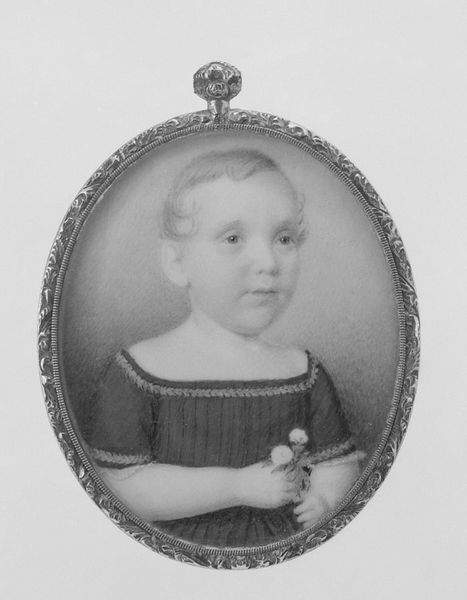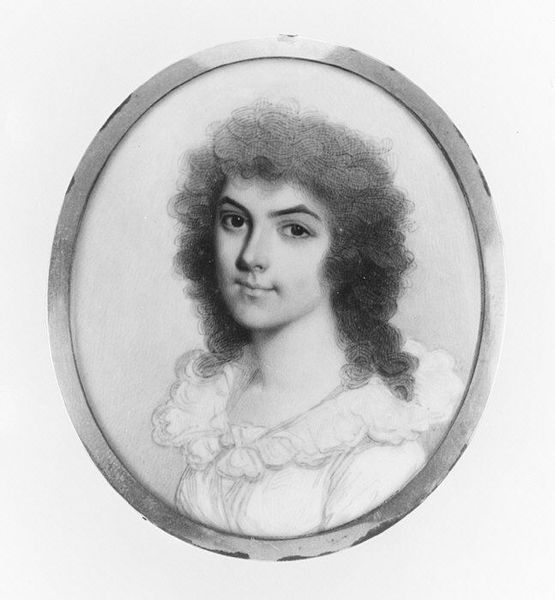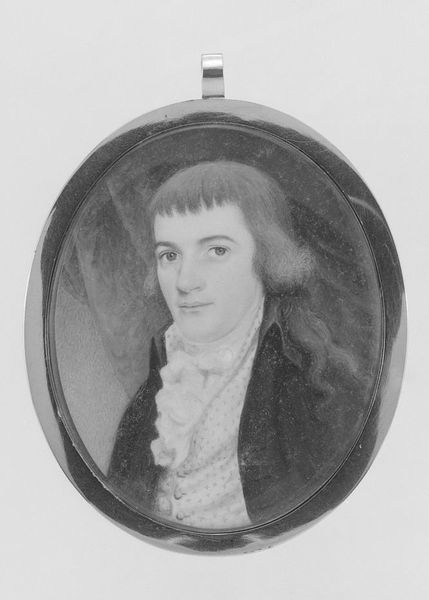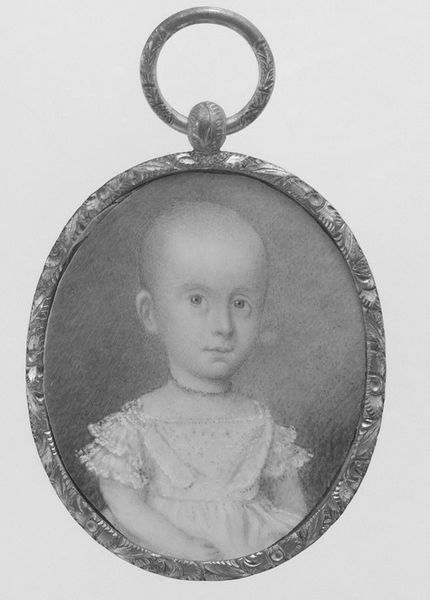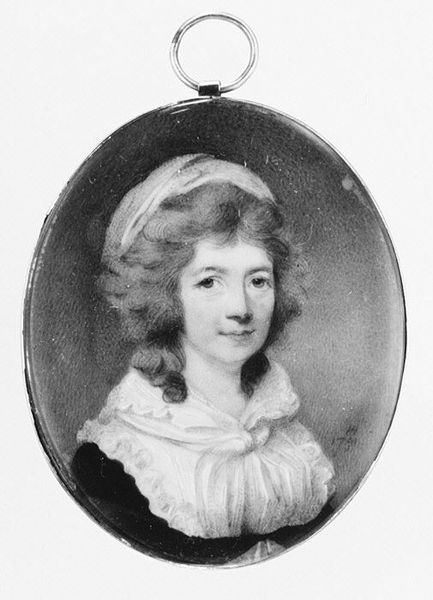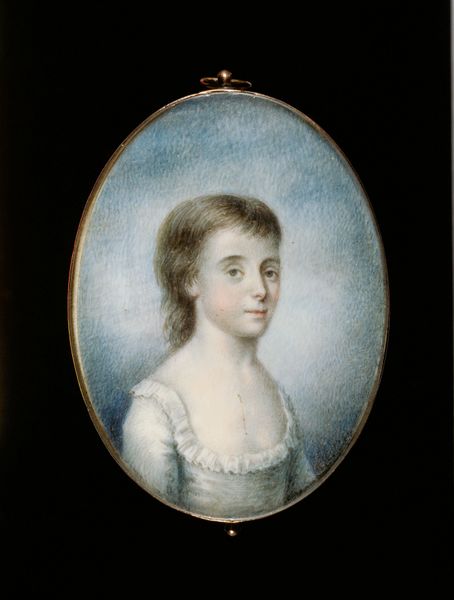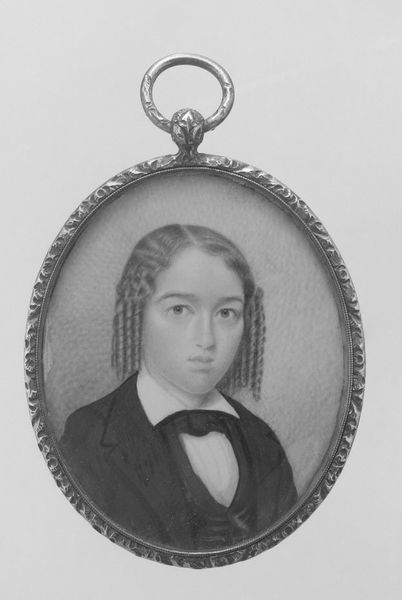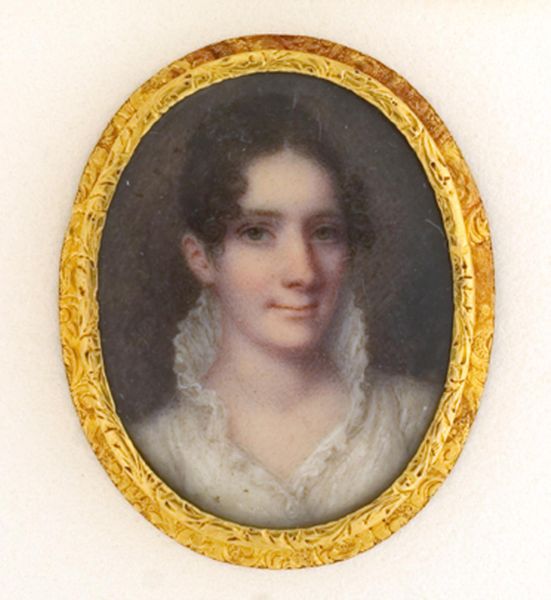
tempera, painting
#
portrait
#
tempera
#
neoclassicism
#
painting
#
black and white
#
miniature
Dimensions: Oval, 2 x 1 5/8 in. (52 x 41 mm)
Copyright: Public Domain
This delicate portrait miniature of George Howard, Lord Morpeth, was made by Richard Collins in the late 18th century, using watercolor on ivory. Working at this scale required immense skill. The artist would have prepared the ivory support, then applied thin washes of paint, building up layers to create subtle gradations of tone. Think about the controlled hand movements, the precision needed to capture likeness and expression in such a small format. The silver frame is also significant. Its presence elevates the miniature from a simple image to a precious object, reflecting the sitter's aristocratic status. Portrait miniatures like this were often worn as jewelry or kept close, signifying personal connection and social status. Considering the labor involved in both painting and framing emphasizes the value placed on craftsmanship during this period, and the sitter's ability to afford such a luxury item. It’s a reminder that even seemingly small objects can tell big stories about society, skill, and the economics of art.
Comments
No comments
Be the first to comment and join the conversation on the ultimate creative platform.
